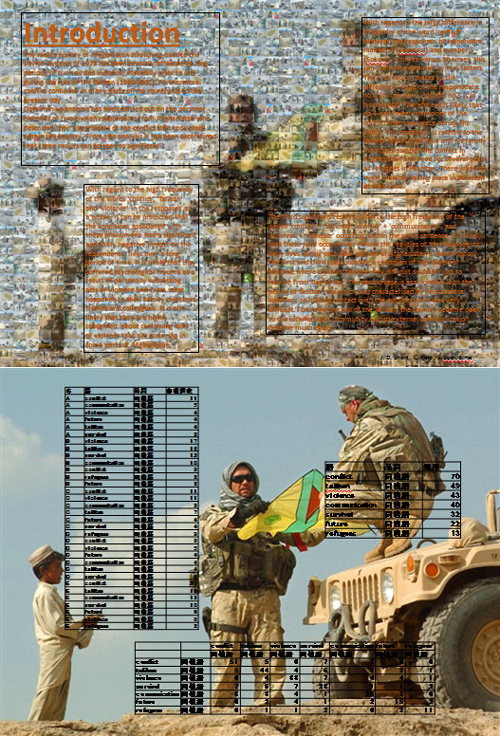The recent history of Afghanistan stretching back to the Soviet invasion of 1979 has been severely affected by long periods of turmoil and violence, especially prior to and during the rule of the Taliban (1996-2001). Furthermore, conflict continues in many parts of the country up to the present day. Data mining analysis has been carried out on the personal histories of five civilian respondents from Afghanistan who described their experiences of the conflict that took place within the country. From this analysis it has been ascertained that three results can be seen as significant.
1.With regard to the high frequency of the words ‘conflict’, ‘Taliban’ and ‘violence’ in the responses as a whole, it can be predicted that the conditions associated with these phenomena had a significant and likely negative impact on the respondents’ lives over a long period of time. It is likely that they suffered psychological trauma as a result of personally witnessing acts of violence and from what happened to their family members, friends and colleagues. It is also likely that they are highly concerned about continuing acts of violence that are occurring in some parts of Afghanistan.
2.With regard to the large difference in frequency of the word ‘conflict’ between the responses of respondent number 4 (Shamsul) and number 5 (Sokout), 9 times versus 30 times, this can likely be explained by two factors. The first factor relates to the difference in age of the respondents: no.4 is in his early 30s and no.5 is in his mid-40s. Therefore it is likely that no.4 had fewer memories of the conflict that took place during the 1980s. This condition is related to the second factor since no.4 and his family members escaped the conflict in Afghanistan and lived for several years as refugees in Pakistan. There was less overt violence taking place in Pakistan at that time.
3.The third significant result relates to the high frequency of the words ‘conflict’ + ‘survival’, ‘conflict’ + ‘communication’, and ‘survival’ + ‘violence’ occurring within the same sentence. It is likely that these joint occurrences reflect the realities of the respondents’ daily lives during particular periods of Afghanistan’s recent history. The first and third cases indicate a condition of high levels of violence where civilians faced a very difficult situation just to survive from day to day. The second case is associated with the period of Taliban rule which was characterised by international isolation, so making contact with the outside world was very difficult. Following the fall of the Taliban, the country became open to the international community and so external communication became much easier.
Afghanistan.html
